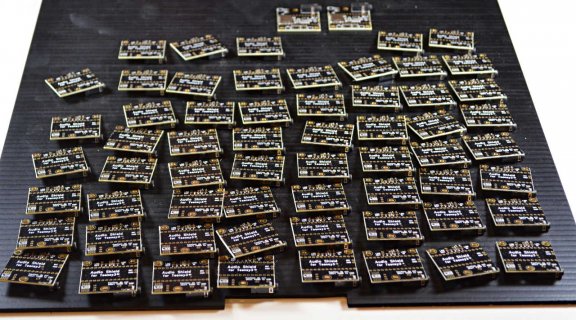PaulStoffregen
Well-known member
Just a quick update, in case anyone's wondering what's up with the audio board.
We've been testing and packaging them today. There was a minor setback where 3 of the pads (for the optional volume/parameter pot) didn't line up well with the bed-of-nails test fixture. I ended up removing those nails and Erin is manually checking those 3 pins on every board with a multimeter.
My hope is to get the board buy-able on the website sometime tomorrow or Saturday. We'll start actually shipping boards on Monday. The first beta software release will be on Monday.

(click for large image)
We've been testing and packaging them today. There was a minor setback where 3 of the pads (for the optional volume/parameter pot) didn't line up well with the bed-of-nails test fixture. I ended up removing those nails and Erin is manually checking those 3 pins on every board with a multimeter.
My hope is to get the board buy-able on the website sometime tomorrow or Saturday. We'll start actually shipping boards on Monday. The first beta software release will be on Monday.

(click for large image)

